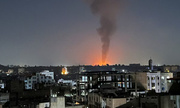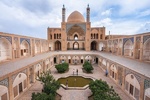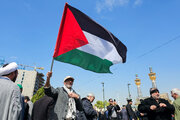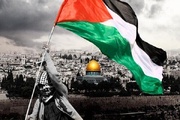The ceremony is traced to the primal concept of light and the Good against darkness and the Evil from the ancient Iranian religion. Shab-e Yalda, with evil as its zenith, is considered unlucky, but from this day forward, light triumphs as the days grow longer and there is more light.
This celebration comes in the first day of the Persian month of “Dey, (Dec. 22)” which was also the name of the pre-Zoroastrian creator god (deity). Later he came to be known as the god of creation and light, from which we have the English word "day" (the period of light in 24 hours).
In the evening of Yalda, bonfires are lit outside, while inside family and friends gather in a night-long vigil around the “Korsee,” a low, square table covered with a thick cloth overhanging on all sides. A brazier with hot coals is placed under the table. All night long the family members and friends sit on large cushions (futons) around the “Korsee” with the cloth over their laps. In days gone by, given the fact that fruits and vegetables were only available in season, the host, usually the oldest in the family, would carefully save grapes, honeydew melons, watermelons, pears, oranges, tangerines, apples and cucumbers. These were then enjoyed by everyone gathered around the “Korsee,” or a fireplace.
On this winter night, the oldest member of the family says prayers, thanks God for the previous year's crops, and prays for the prosperity of next year's harvest. Then with a sharp knife, he cuts thick yogurt, melon, and watermelon and gives everyone a share. This cutting symbolizes the removal of sickness and pain from the family. Snacks are passed around through the night: pomegranates with angelica powder (Golpar), and Ajeel-e Shab-e Yalda; a combination of nuts and dried fruits. Eating nuts is said to lead to prosperity in days to come. A more substantial fare for the night's feast includes eggplant stew with plain saffron-flavored rice, rice with chicken, thick yogurt, saffron and carrot brownies (Halva-ye Haveej).
These foods symbolize the balance of the seasons; watermelons and yogurt are eaten as a remedy for the heat of the summer, since these fruits are considered cold or “Sardee.” Halva, the saffron and carrot brownies, are eaten to overcome the cold temperatures of winter since they are considered hot or “Garmee”.
All through the night of festivities, the family keeps the fires burning and the lights glowing to help the sun in its battle against darkness. Early Christians took this very ancient Persian celebration to celebrate Mitra, goddess of Light, and also linked it to the nativity of Christ. Today the date of Christmas is slightly changed but there are many ritual similarities; lighting of candles, decorating trees with lights, staying up all night, singing and dancing, eating special foods, paying visits, and finally, celebrating this longest night of the year with family and friends.
From: New Food of Life (1996)
Author: Najmieh K. Batmanqilij























Your Comment